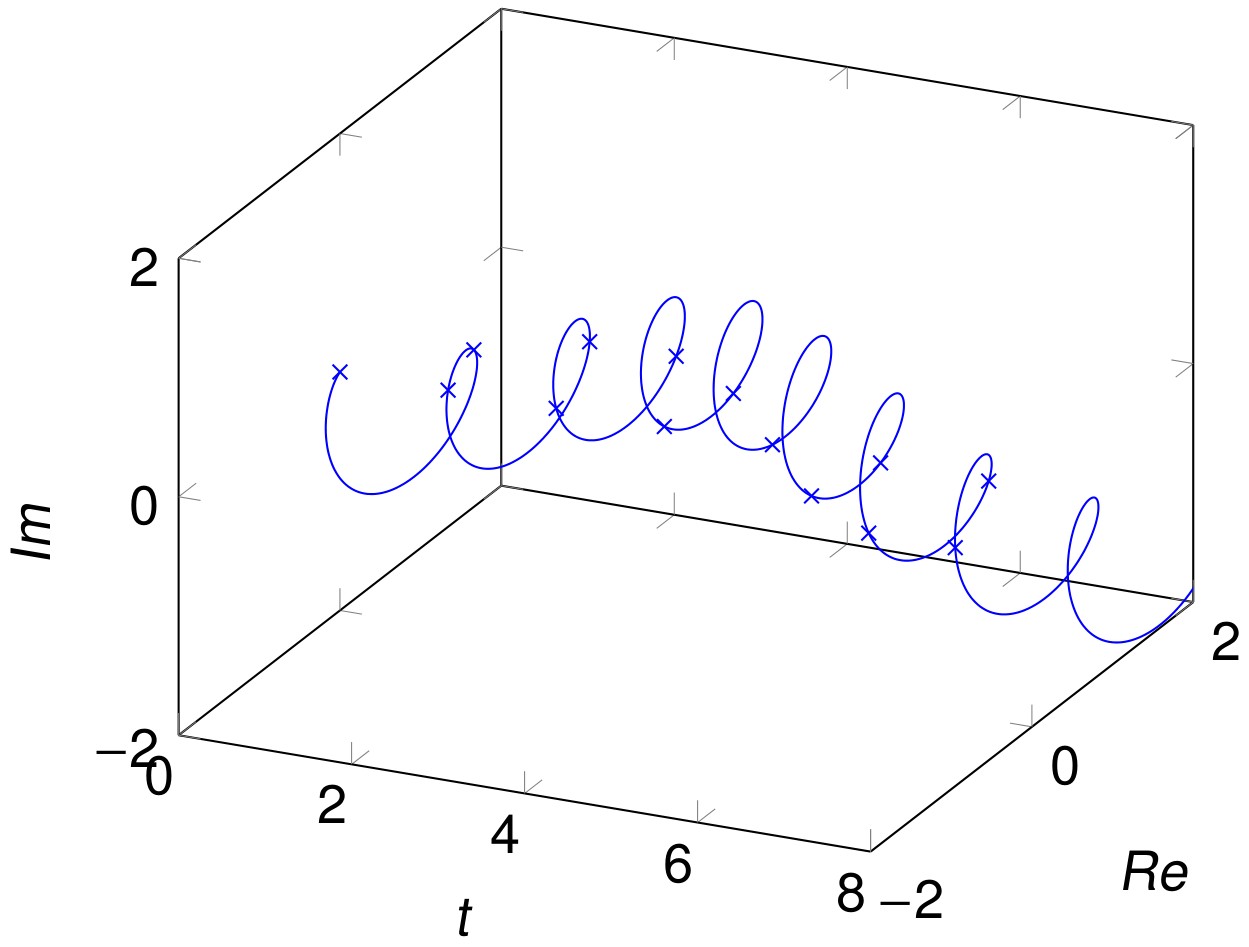f(x) = sin( x * PI / 5 )$$ f(x) = \sin \left( \tfrac{\pi}{5} x \right) $$
(1/10) * exp( 2 * PI * i * 1/10 ) * (0 - 5i) = (0.293893, -0.404508i)$$ \tfrac{1}{10} e^{i 2 \pi (1/10)} \cdot (0 - 5i) = (0.293893 -0.404508i) $$
(1/10) * exp( 2 * PI * i * 9/10 ) * (0 + 5i) = (0.293893, 0.404508i)$$ \tfrac{1}{10} e^{i 2 \pi (9/10)} \cdot (0 + 5i) = (0.293893 +0.404508i) $$

